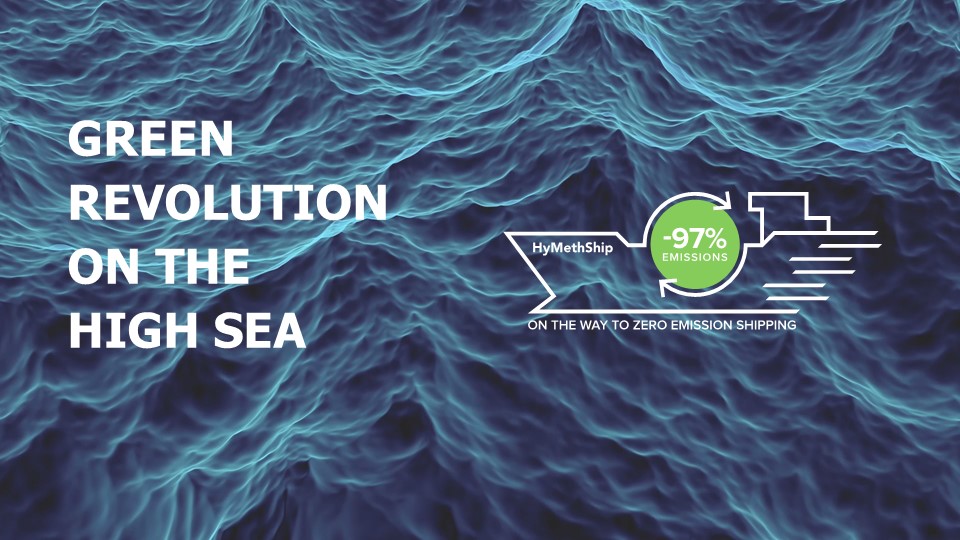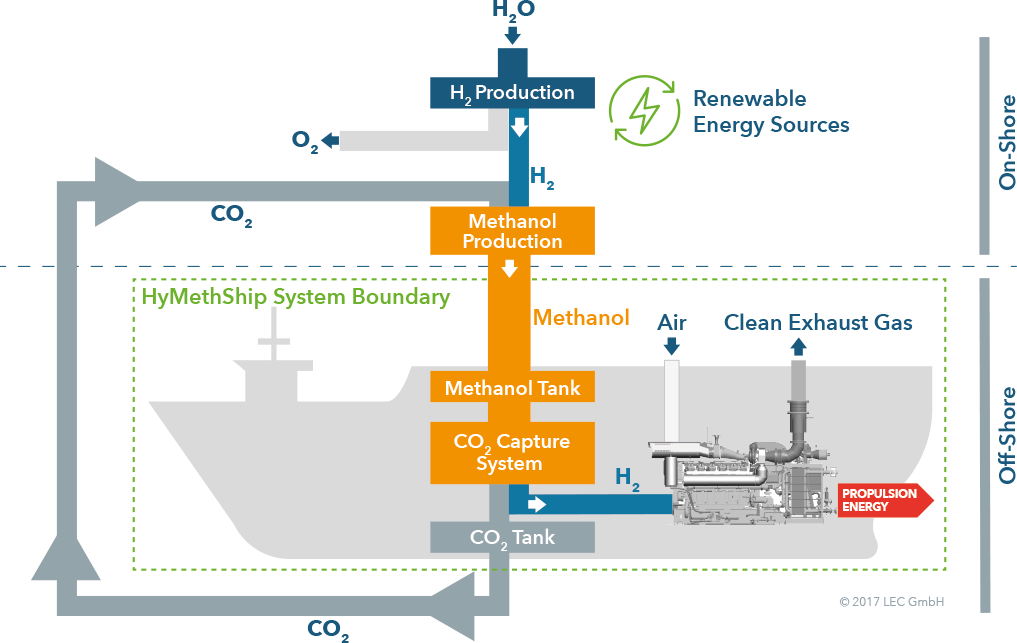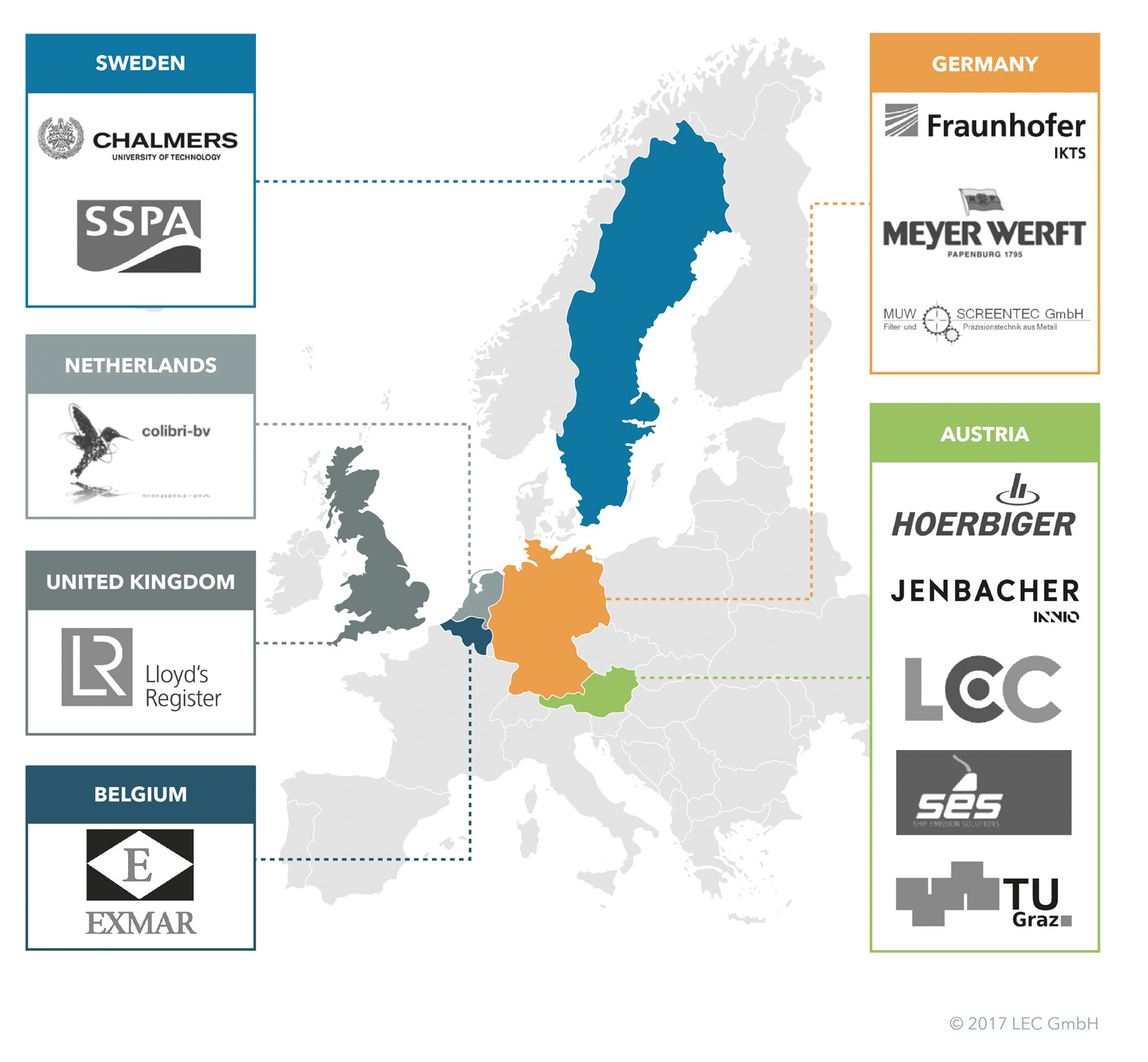LEC HyMethShip

HYMETHSHIP SYSTEM
Das HyMethShip Konzept kombiniert einen Membranreaktor, ein System zur CO2-Abscheidung, ein Speichersystem für CO2 und Methanol und einen Wasserstoffverbrennungsmotor zu einem innovativen Gesamtsystem. Wasserstoff wird an Bord des Schiffes durch Methanol-Reformierung hergestellt und in einem konventionellen Hubkolbenmotor, der für den Betrieb mit verschiedenen Kraftstoffen modifiziert und speziell für den Wasserstoffbetrieb optimiert wurde, nahezu ohne CO2 Emissionen zu verursachen verbrannt. Die drastische Reduktion der CO2 Emissionen wird durch die Verwendung von regenerativ erzeugtem Methanol als Primärenergieträger und Kohlenstoffabscheidung und -speicherung bereits vor der Verbrennung erreicht. Idealerweise wird das Methanol an Land aus dem auf dem Schiff gespeicherten CO2 erzeugt, so dass sich ein geschlossener CO2 Kreislauf für den Schiffsantrieb ergibt.
Innerhalb des HyMethShip Projektes wurden umfangreiche Risiko- und Sicherheitsanalysen und -bewertungen durchgeführt, um zu gewährleisten, dass das Gesamtsystem alle Sicherheitsanforderungen an den Schiffsbetrieb erfüllt und keine Verschlechterungen der Betriebssicherheit gegenüber Schiffen mit konventionellen Marinekraftstoffen und Antriebssystemen auftreten. Bei der Umsetzung des neu entwickelten Konzeptes wurden alle derzeit in der Erarbeitung befindlichen Vorschriften für den Gebrauch von Kraftstoffen mit niedrigem Flammpunkt berücksichtigt und ein Beitrag zur Weiterentwicklung und Finalisierung dieser Vorschriften geleistet.
Die Wirtschaftlichkeit des Gesamtsystems wurde für verschiedene Schiffstypen und unterschiedliche Anwendungsfälle detailliert analysiert und beurteilt. Für den Güter- und Personentransport auf Mittel- und Langstrecken ist das HyMethShip Konzept aktuell die vielversprechendste Option, um die erforderliche CO2 Reduktion bei gleichzeitiger Wirtschaftlichkeit zu erreichen. Die Realisierung des Gesamtkonzepts in der europäischen Schifffahrtsindustrie wird es dem Sektor ermöglichen, seinen Vorsprung im globalen Wettbewerb beim Bau hochentwickelter Schiffe und Schiffsantriebe auch in Zukunft zu halten.



KONSORTIUM
Das leistungsstarke Konsortium brachte 13 hochkarätige Partner aus 6 EU-Mitgliedstaaten zusammen. Dazu gehören 2 Universitäten, ein großes Motorenforschungszentrum, Komponenten- und Anlagenhersteller, eine Werft, eine Reederei, eine Klassifikationsgesellschaft und renommierte wissenschaftliche Partner. Der hohe Anteil an Industriepartnern garantiert, dass die im Projekt entwickelten Innovationen in den Markt eingeführt werden und sich dort etablieren.
Die Konsortialpartner auf einen Blick
Chalmers University of Technology
Colibri
Exmar Marine
Fraunhofer IKTS
INNIO Jenbacher
Graz University of Technology
HOERBIGER Wien
LEC (Project Coordinator)
Lloyd’s Register
MEYER Werft
MUW Screentec
SE.S
SSPA Sweden
